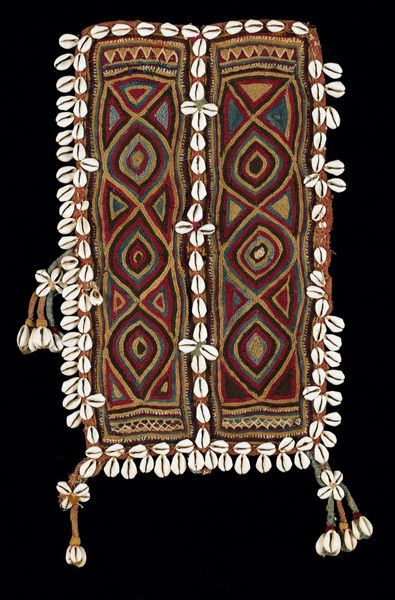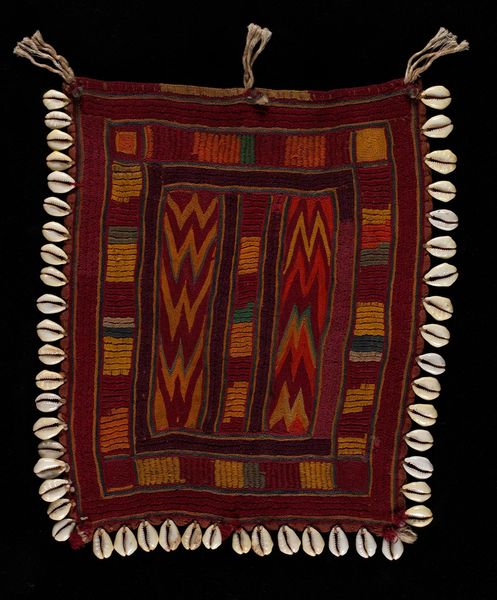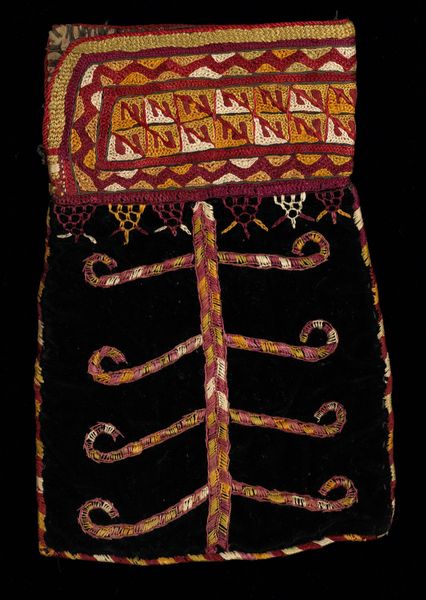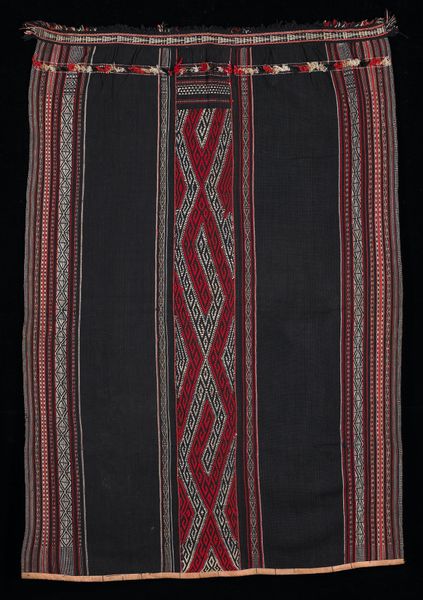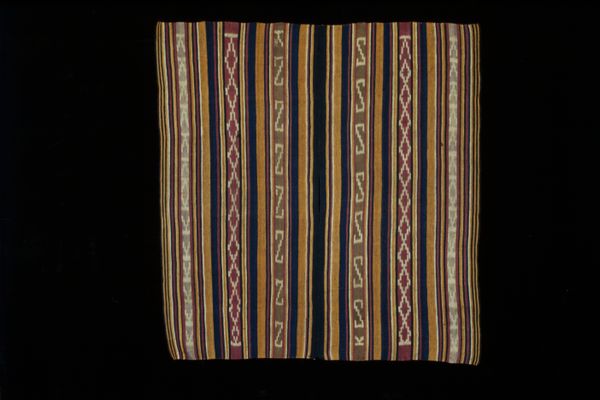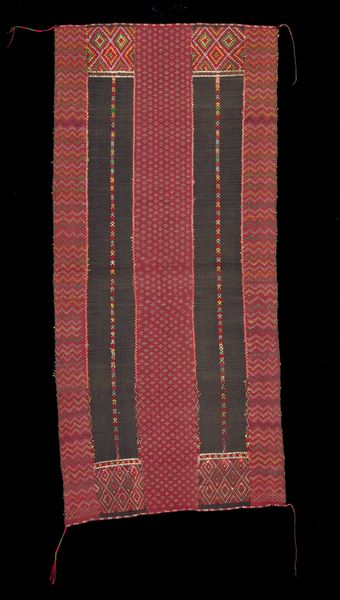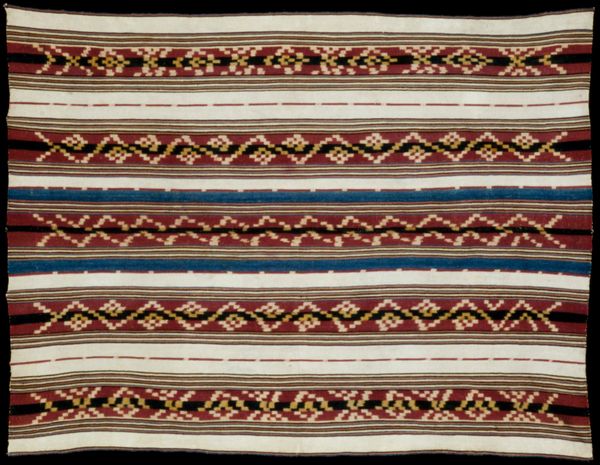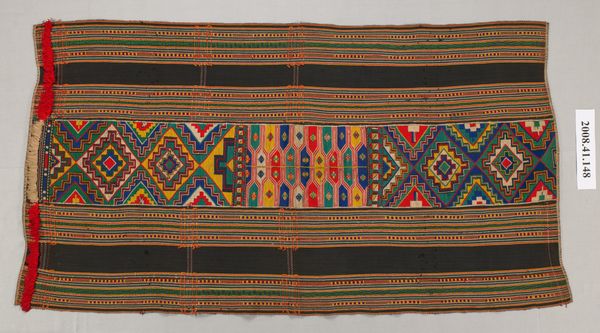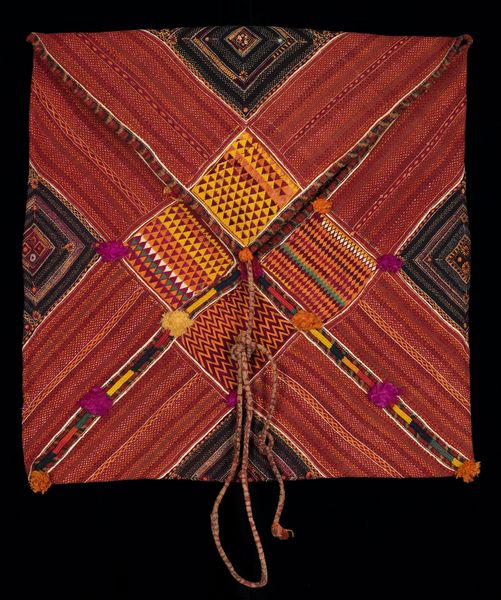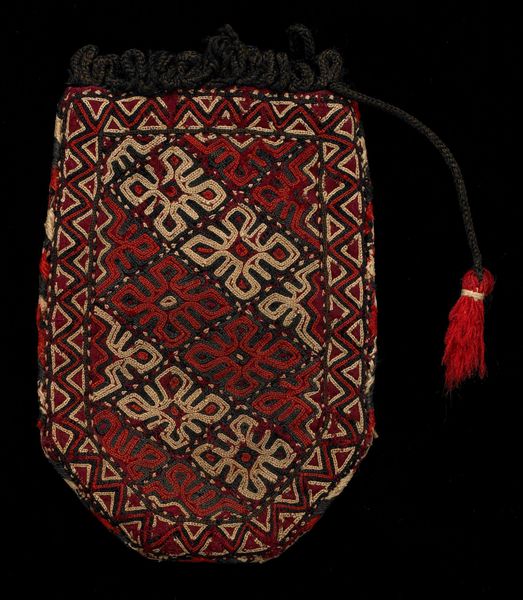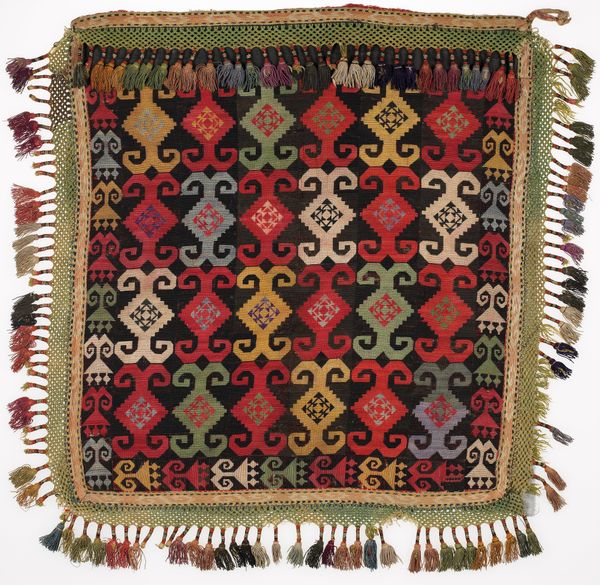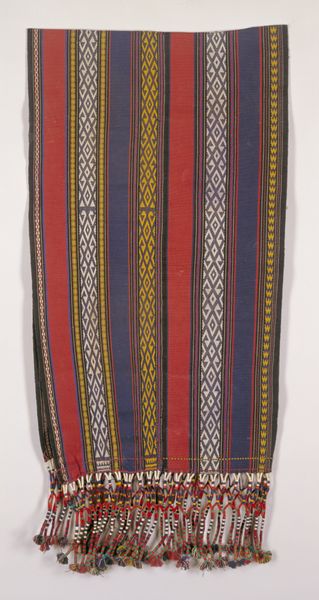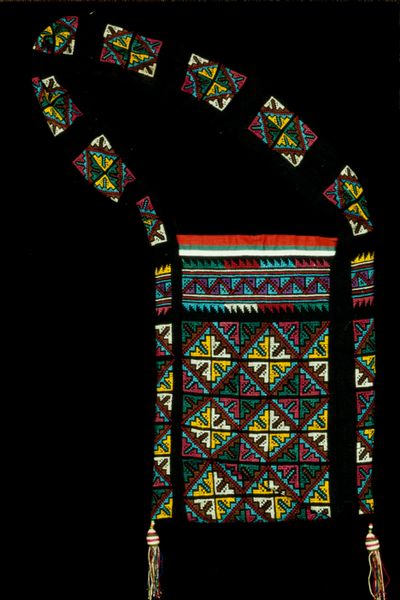
textile
#
textile
#
folk-art
#
geometric
#
decorative-art
Dimensions: 16 x 10 1/2 in. (40.64 x 26.67 cm)
Copyright: Public Domain
Curator: I’m immediately struck by the sheer amount of labor involved in producing this Banjara neck panel from a hat, dating from around 1900. The Minneapolis Institute of Art houses this piece. It combines cotton, wool, and those wonderful shells. Editor: It certainly grabs your attention. The contrast between the vibrant wool embroidery and the stark white shells is stunning. Almost aggressive, but inviting at the same time. What can you tell me about the role these panels played? Curator: Neck panels like these are significant cultural markers. They offer a lens into Banjara communities’ values, beliefs, and aesthetic sensibilities. Consider how weaving functions both as a creative outlet and as a form of social production. The meticulous craftsmanship is a testament to skills passed down through generations. Editor: It’s more than just aesthetic, isn't it? I see this interplay of local materials transformed through artistic practices as an act of cultural assertion. The very act of sourcing, spinning the wool, and weaving it reflects agency in the face of social structures. These objects move beyond the 'decorative.' What can you tell me about the shell decoration? Curator: Exactly. The cowrie shells are particularly compelling because they function as both decoration and currency in some contexts, suggesting complex economic networks and symbolic value. They add an element of tactile richness that invites interaction. The geometric motifs echo widely dispersed textile designs. The making-by-hand element here is unavoidable. Editor: It really makes you think about the economies that facilitated access to cotton, wool and the shells. Who benefited? How did these designs travel? Thinking about power relations and global economies helps unlock the social history embedded in such a panel. Curator: The power and meaning imbued in textiles as a functional, aesthetic and social object makes this panel more than just adornment, more like social document. I now view that interplay of materials, design, and social narratives within a framework of enduring value and continued agency. Editor: Absolutely. The hat’s vibrant patterns, initially appealing at the visual level, truly prompt exploration into cultural production as a tool for both reflecting and shaping societal roles and identities. Thank you!
Comments
No comments
Be the first to comment and join the conversation on the ultimate creative platform.
